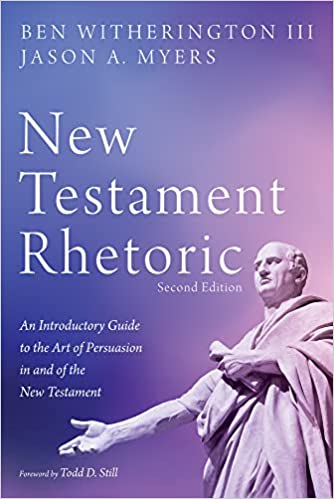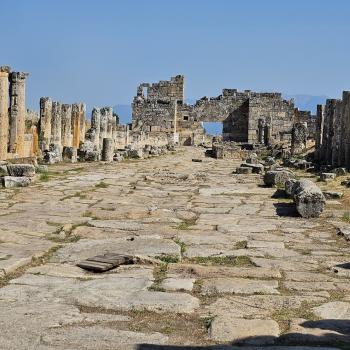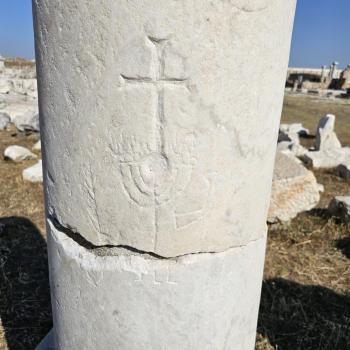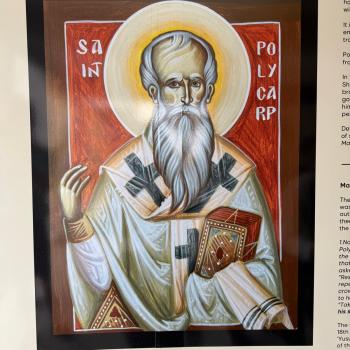Despite the expanded space in the 2nd edition of my rhetorical textbook (see above, readily available on Amazon) there are many other sources of helpful information relevant to NT studies found in literature on the Greek and Latin classics. In this and subsequent posts I will be dealing with things that can be gleaned from the series of books published by Cambridge U. Press, under the general title of The Cambridge History of Classical Literature. I will first deal with Volume One Part Three: Philosophy, History, Oratory edited by Easterling and Knox. This volume first appeared in 1989, but I have never seen it referenced in NT scholarship since then. The same applies to the material in subsequent posts. The chapter of direct relevance is Chapter 5 entitled Oratory (pp. 86ff.)
Not surprisingly, well before the NT era, Greek rhetoricians were pointing to the rhetorical discourse in the Iliad, for instance the comparison of the oratory of Odysseus and Menelaus (Iliad 3.212-24) which shows a critical awareness of effective rhetorical style and delivery “at the dawn of European literature” (p. 86). This chapter was written by the mentor of us all at UNC George Kennedy, who guided Duane Watson in his doctoral dissertation at Duke, and me as a student of classics and Greek history with Jim McCoy.
The key insight of Kennedy at the outset of the essay is this “Both Greek rhetorical theory and self-conscious techniques of oratory seem to be a produce of democracy as it developed in Athens after the Persian wars, especially after the reforms of Ephialtes (462 B.C.) and in Syracuse when democracy replaced tyranny (467 B.C.). According to tradition, rhetoric was ‘invented’ by a Sicilian named Corax who taught Syracusans involved in litigation before democratic courts how to argue from the probabilities of their situation. He was followed by Tisias, who may have compiled a small rhetorical handbook illustrating such argumentation and explaining how to present the facts and proof effectively in a simple standardized structure. This structure became the four usual parts of the classical judicial oration: prooemion… aimed at securing the attention, interest, and good will of the jury; diegesis, or narration, presenting the background and facts in a clear and rapid summary; pistis or proof of the contention of the speaker; and epilogos or conclusion, in which the speech is summarized and often an attempt is made to arouse the emotions of the jury on behalf of the speaker.” Kennedy points out that while the Greeks did appeal to personal testimony and documents, they were wary of such things because they could be obtained by force or bribery. They preferred arguments based on the probability of human conduct. They also preferred the living word and so oratory, over documents. Kennedy goes on to stress that literary artistry both in its deliberative and judicial forms was a special feature of Athenian democracy during the golden age. He goes on to stress as well that funeral oratory, epideictic rhetoric was typical of Athenian rhetoric as well. Gorgias is an important figure in regard to the latter, as his flamboyant and hyperbolic style left a permanent stamp on such oratory. The rest of the chapter deals with the development of rhetoric in the hands of Antiphon,Andocides, Lysias, Isaeus, Isocrates, and of course Demosthenes whose speeches became especially famous, not to mention Aeschines, Hyperides, Lycurgus, and Dinarchus. The point of mentioning all this is Aristotle is actually an epitomizer of all the rhetorical forms and substance that had come before him when he wrote his influential treatise entitled Rhetoric. Aristotle of course was mainly a philosopher famous for training Alexander the Great, but as A.A. Long stresses in his chapter on Aristotle, “Aristotle himself, and some later Greek philosophers, made fundamental contributions to the theory of rhetoric and to literary criticism. Much of their work in this field was taken over by later classical writers, especially the Roman rhetoricians [e.g. Cicero and Quintilian], and it has hand a continuing influence.” (p.115). In our next post we will deal more directly with Aristotle’s classic work on rhetoric (in 3 volumes), but here some important points need to be made of relevance to the discussion of the NT:
- Oratory was primary and documents secondary in an oral culture like we find in the Greco-Roman era before and during the NT period itself. The documents we have from these periods are largely oral documents, and that includes the NT documents which were meant to be read out loud and in various case take recognizable rhetorical forms, especially in the case of Paul’s letters, Hebrews, and 1 Peter.
- The origins of democracy in Athens are intertwined with rhetoric, for rhetoric assumes that people have to be persuaded to embrace a certain set of beliefs or course of action. It is surely not an accident that Paul chose to refer to ‘the church’. as the ekklesia tou theou, the assembly of God where people should be expected to freely embrace, or not God’s truth, and acts of persuasion were used to convince them. In other words, in regard to the Gospel, the church was a place where one could freely discuss and debate the Gospel message, and freely embrace it or not, hence the need for argumentation by the leaders.
- As the classics scholars have noted, letter writing and its conventions were a subheading under the broader banner of rhetoric and oral communication. Indeed there had been rhetorical handbooks for centuries before there was ever a Greek or Latin handbook on letter writing, and the Progymnasmata itself taught elementary students how to write a letter in good rhetorical form!
- It is worth asking the question whether any of the NT writers ever used the word pistis in its rhetorical sense of proof. For instance does the much debated phrase pistis Christou possibly refer to the proof of Christ?













